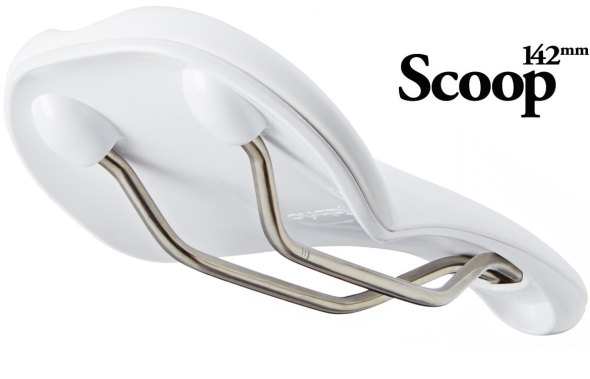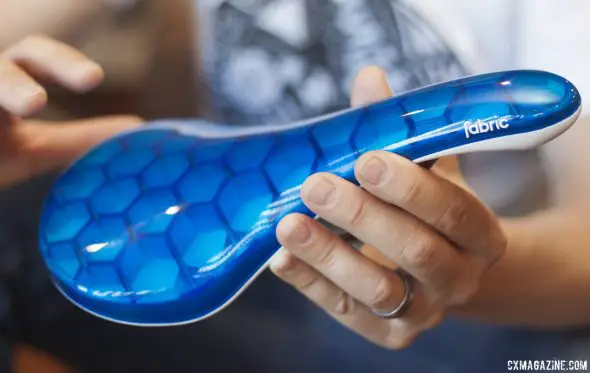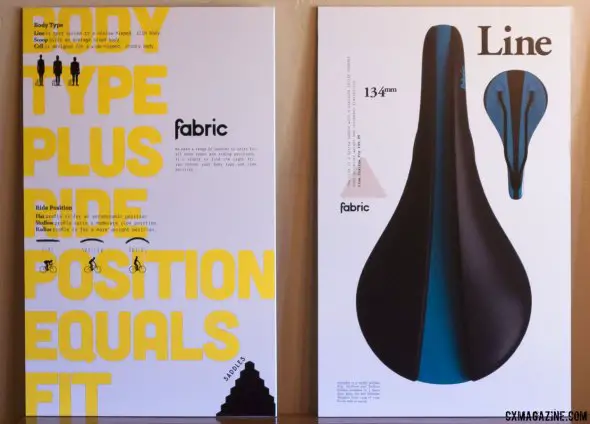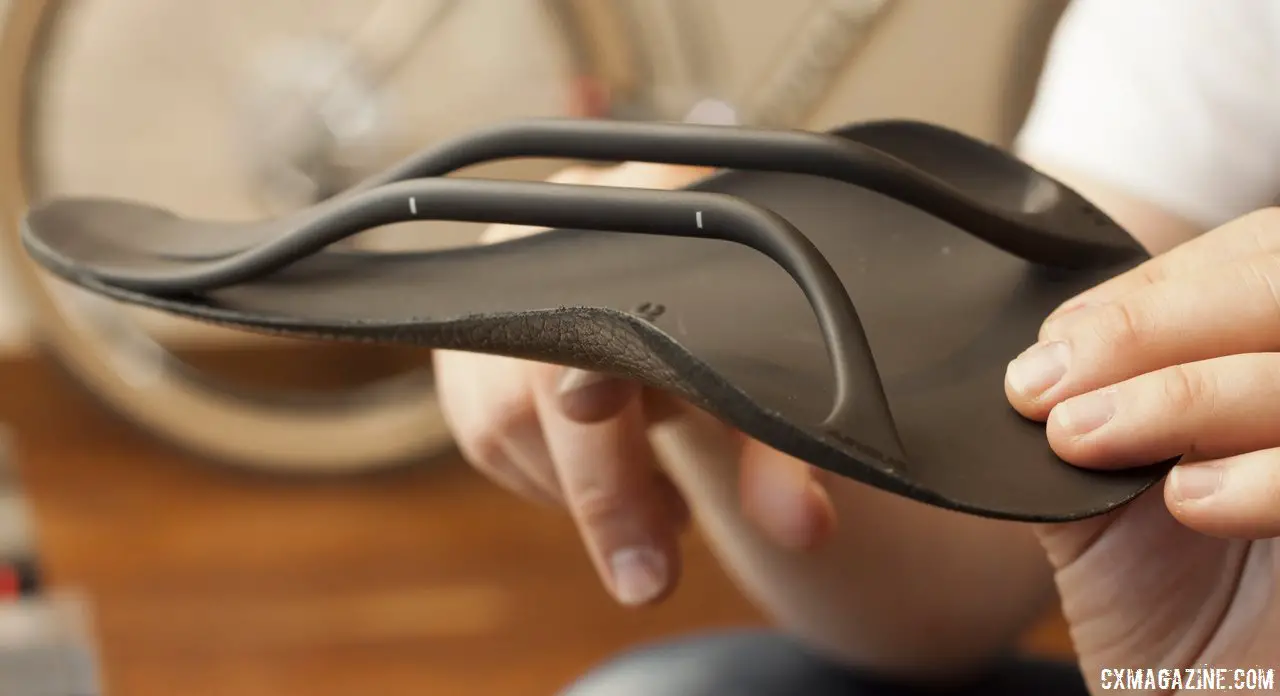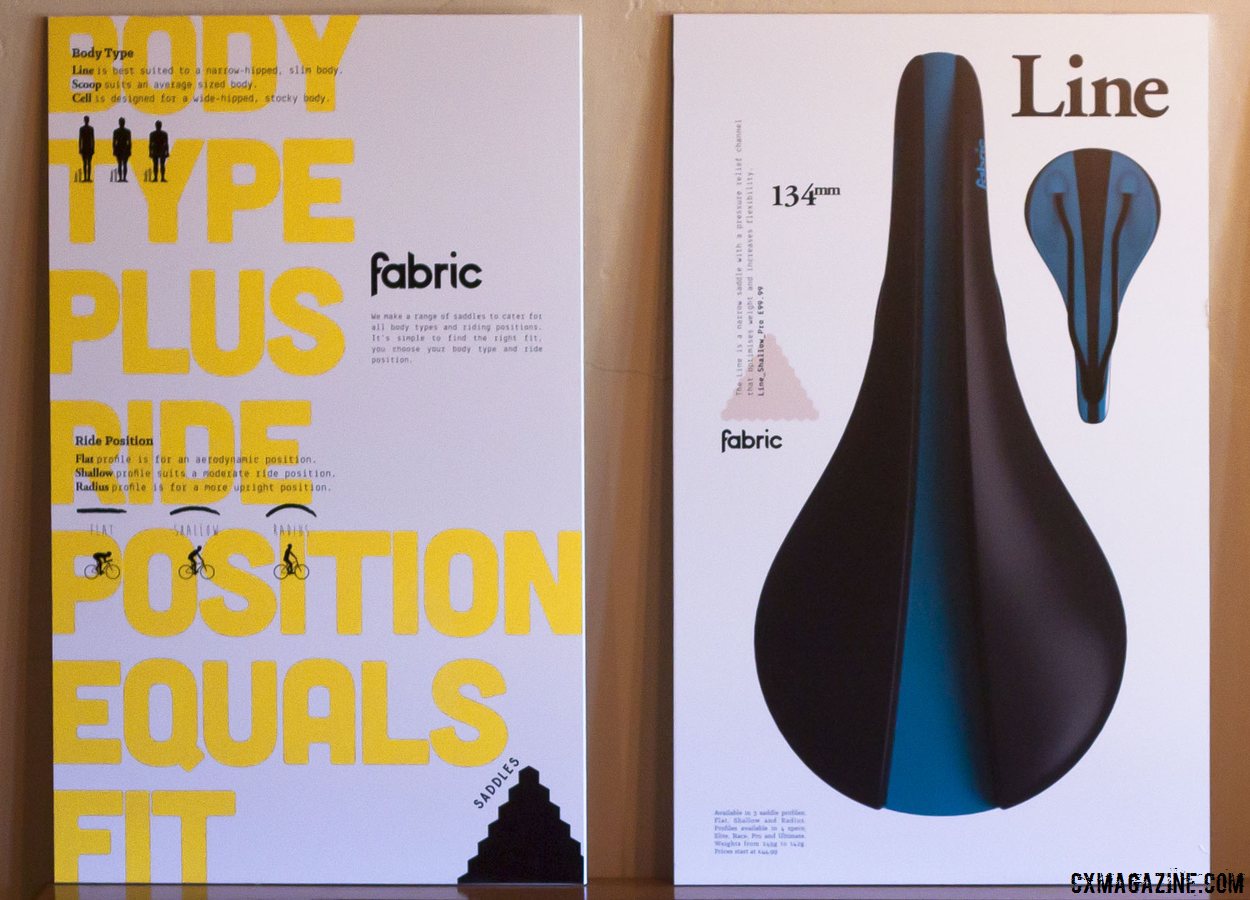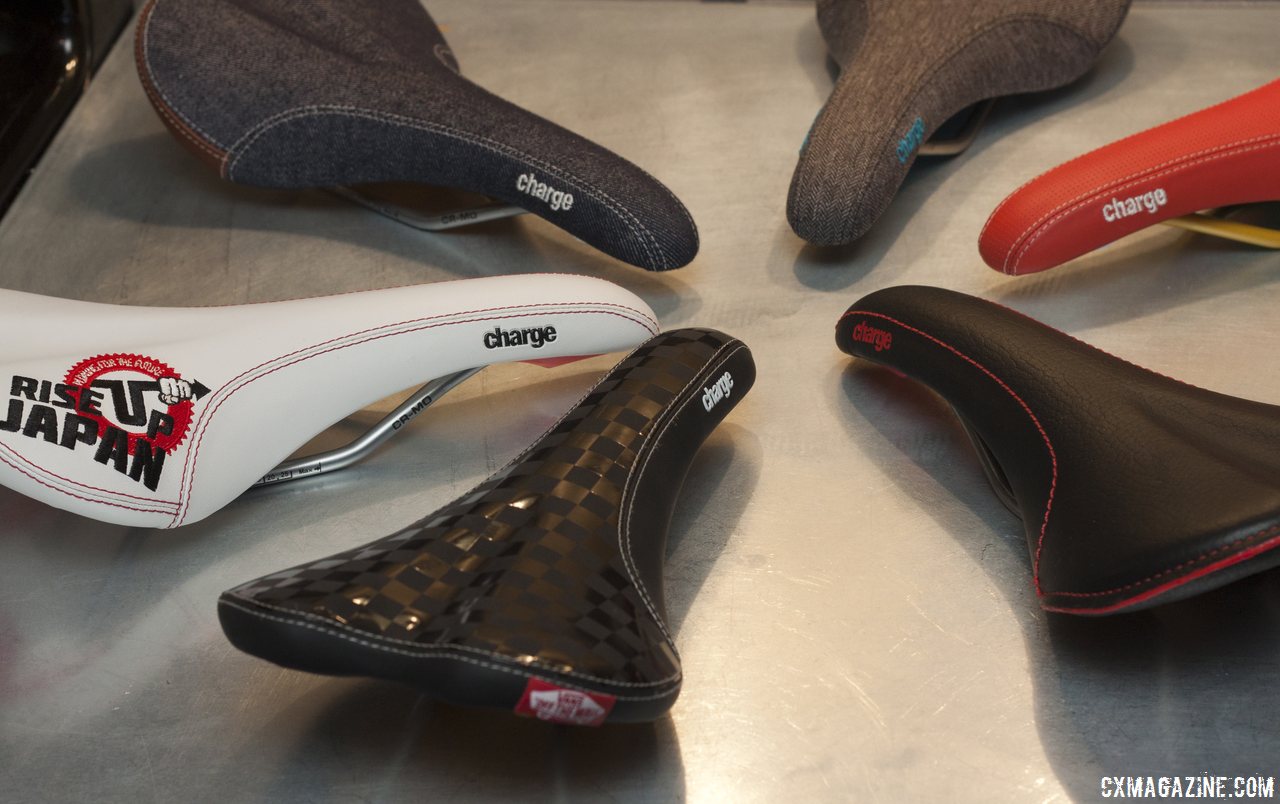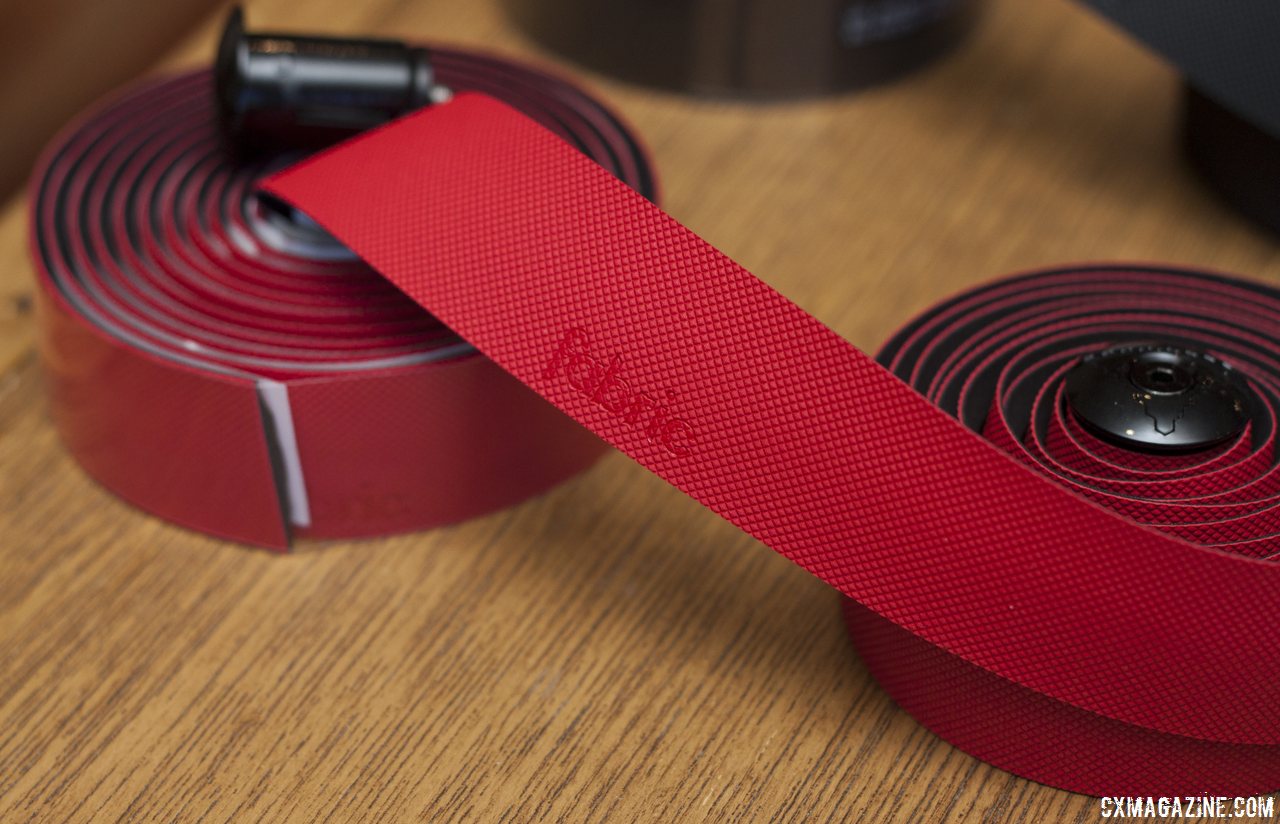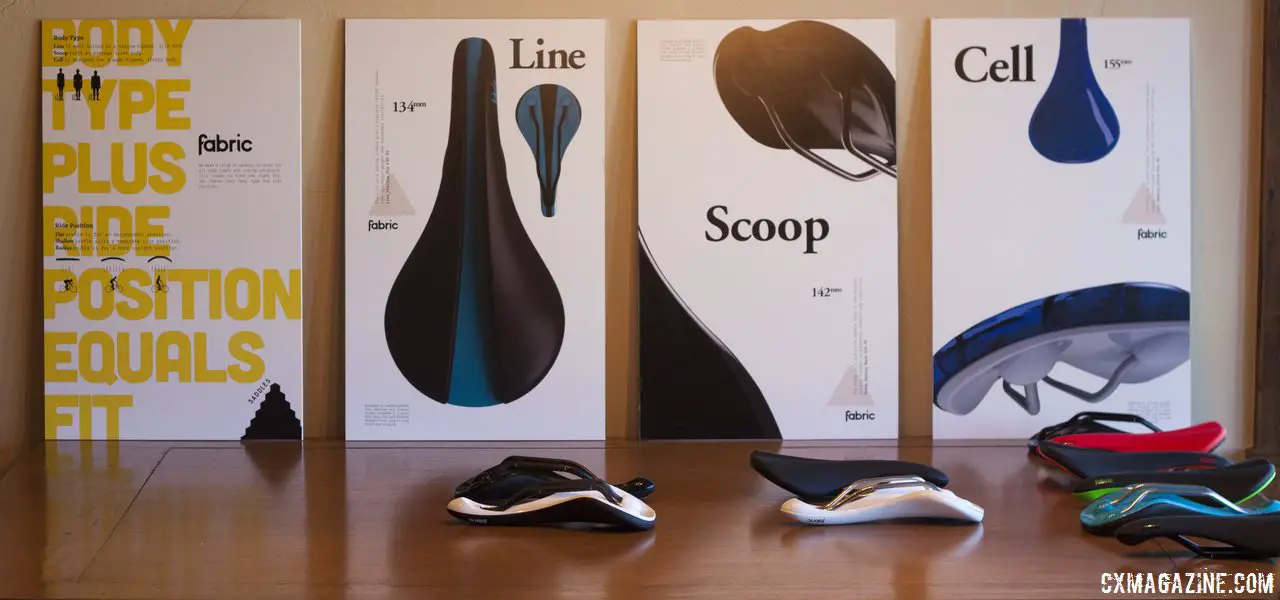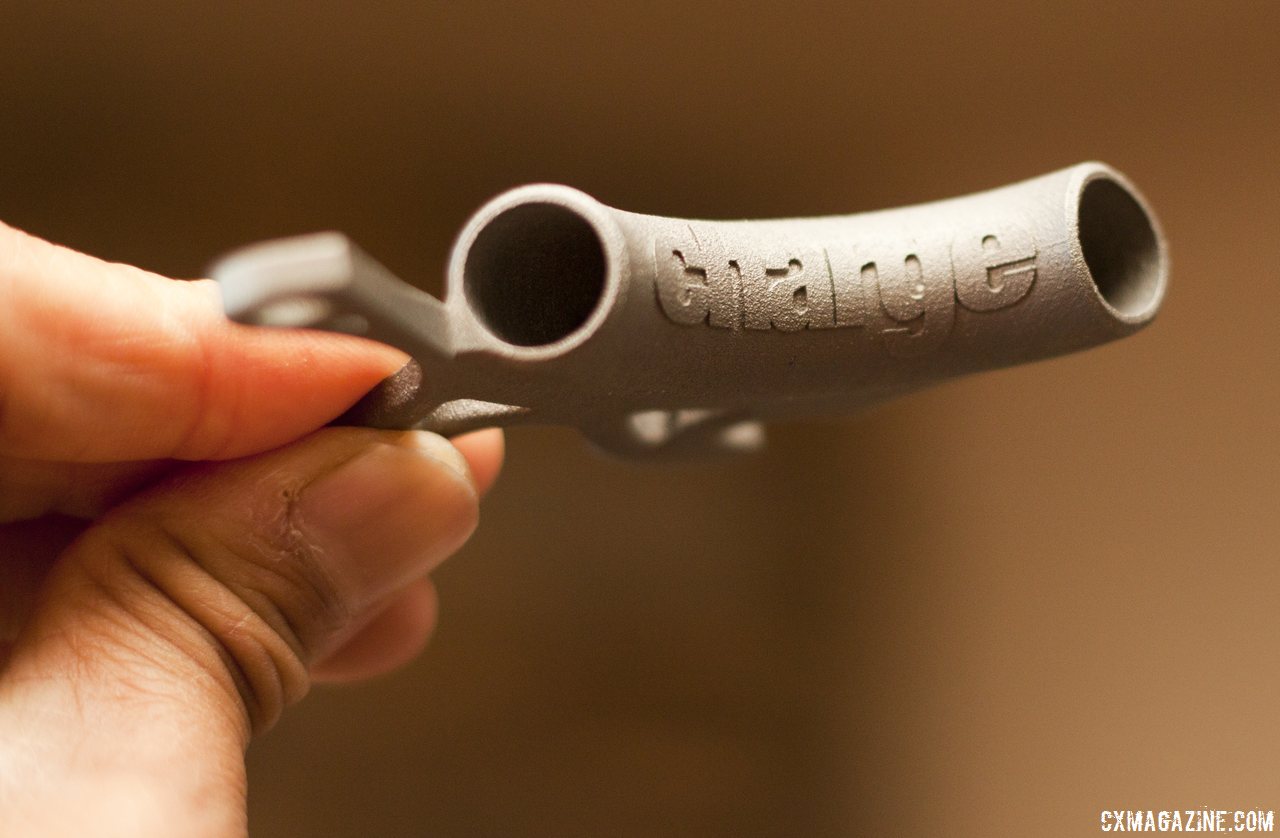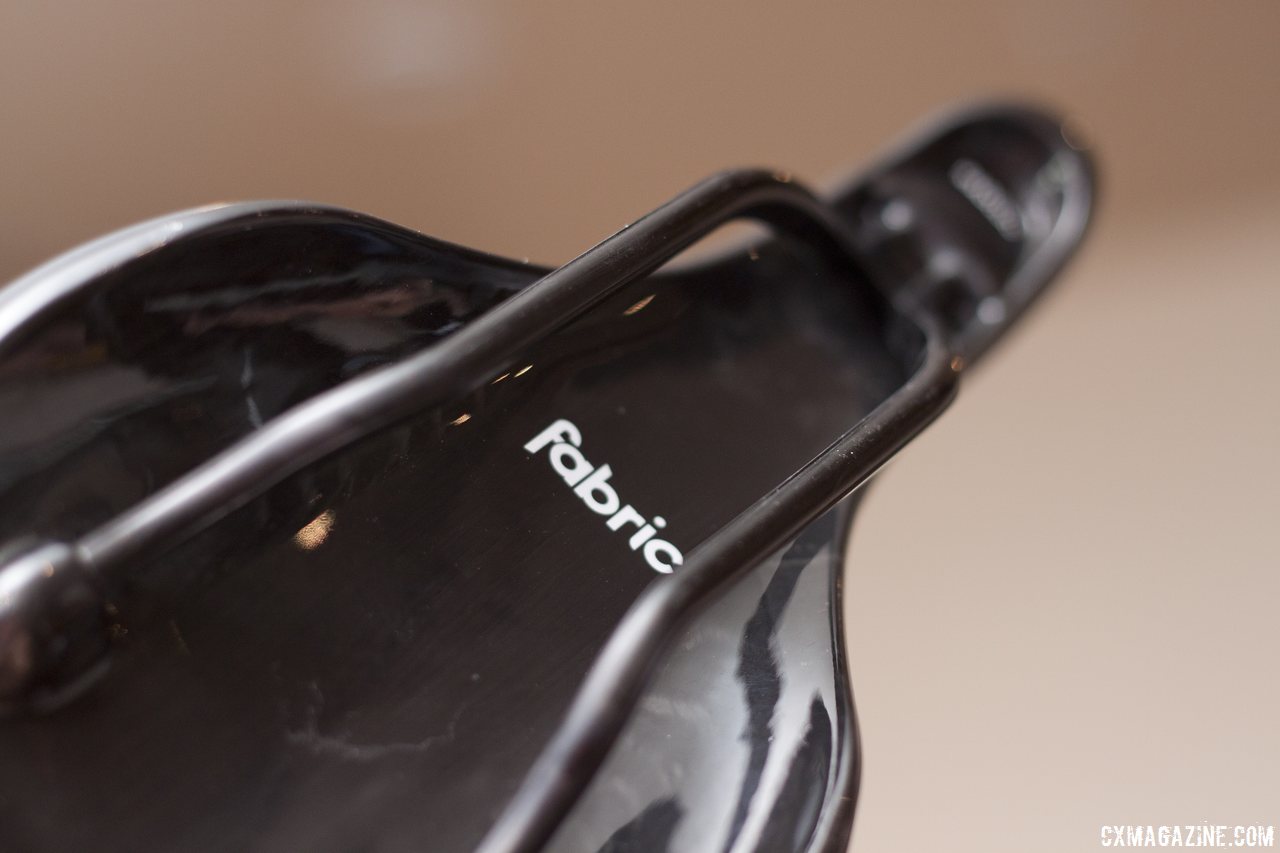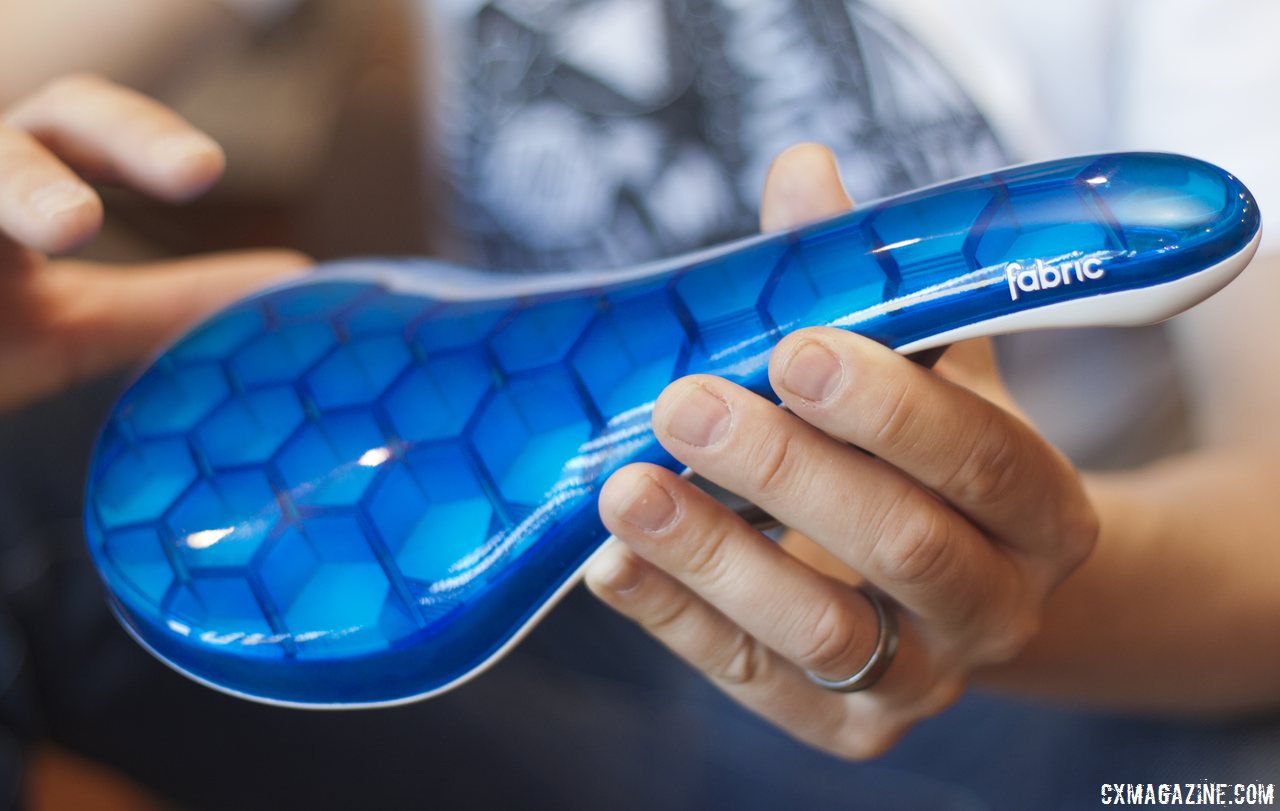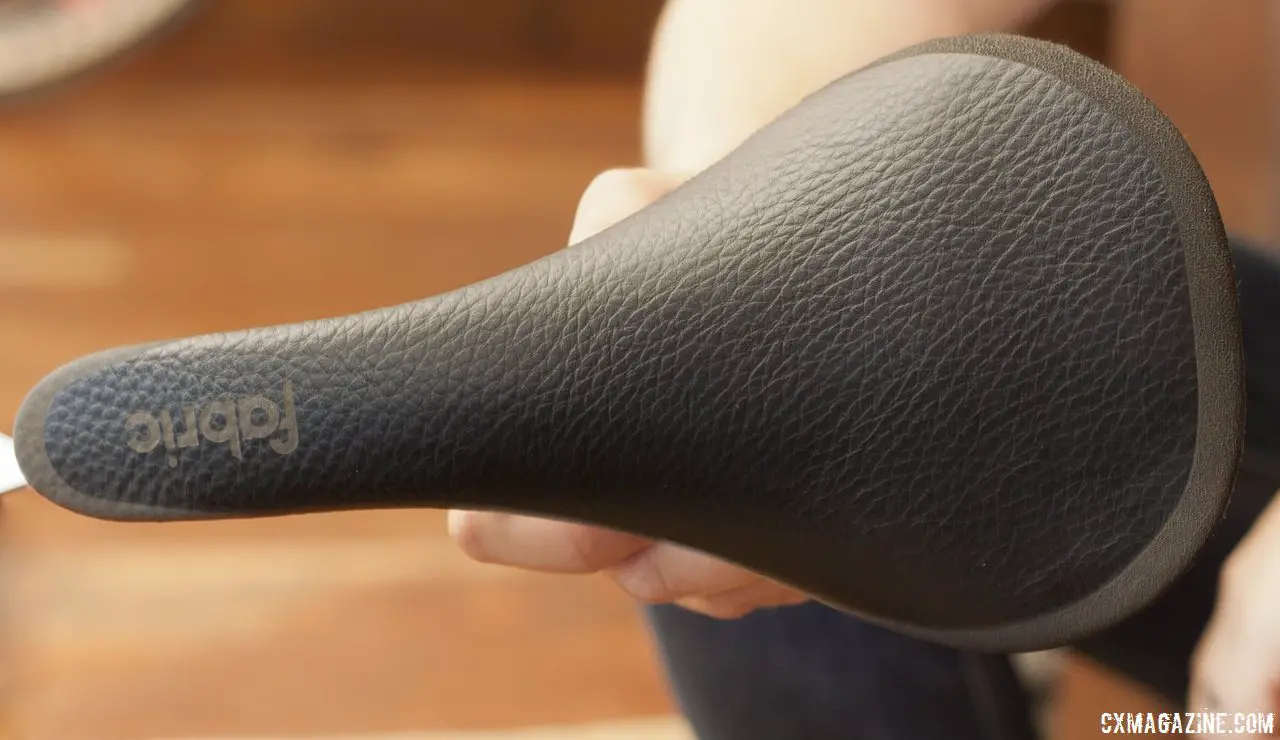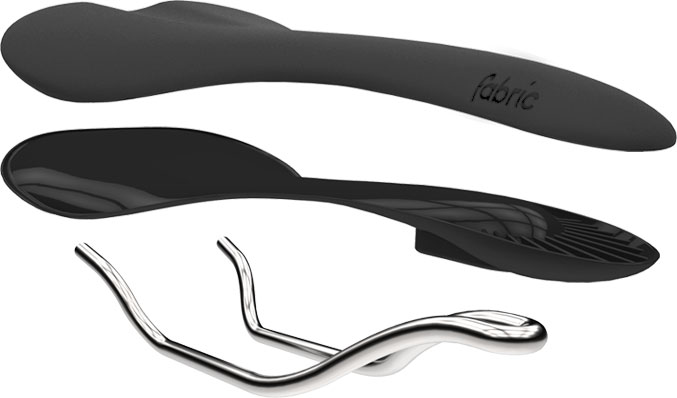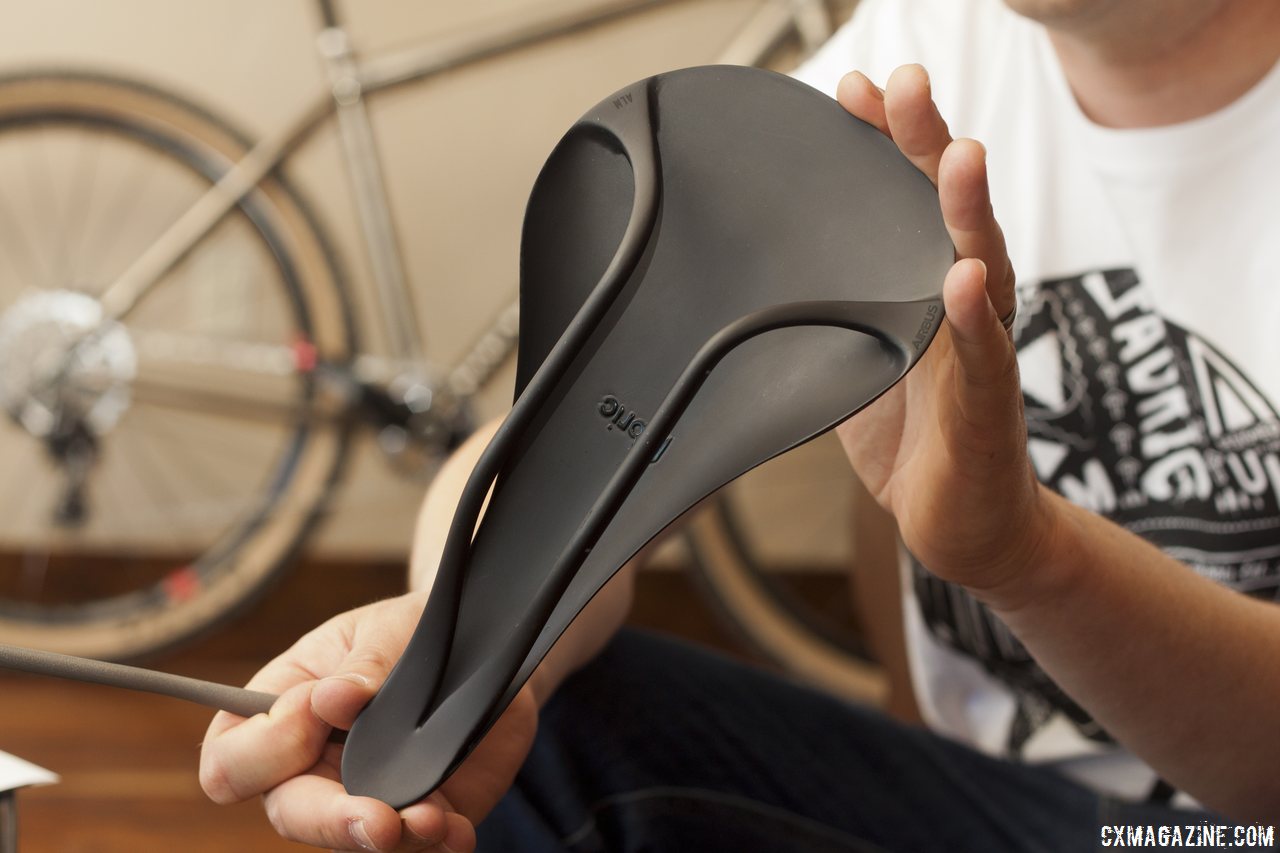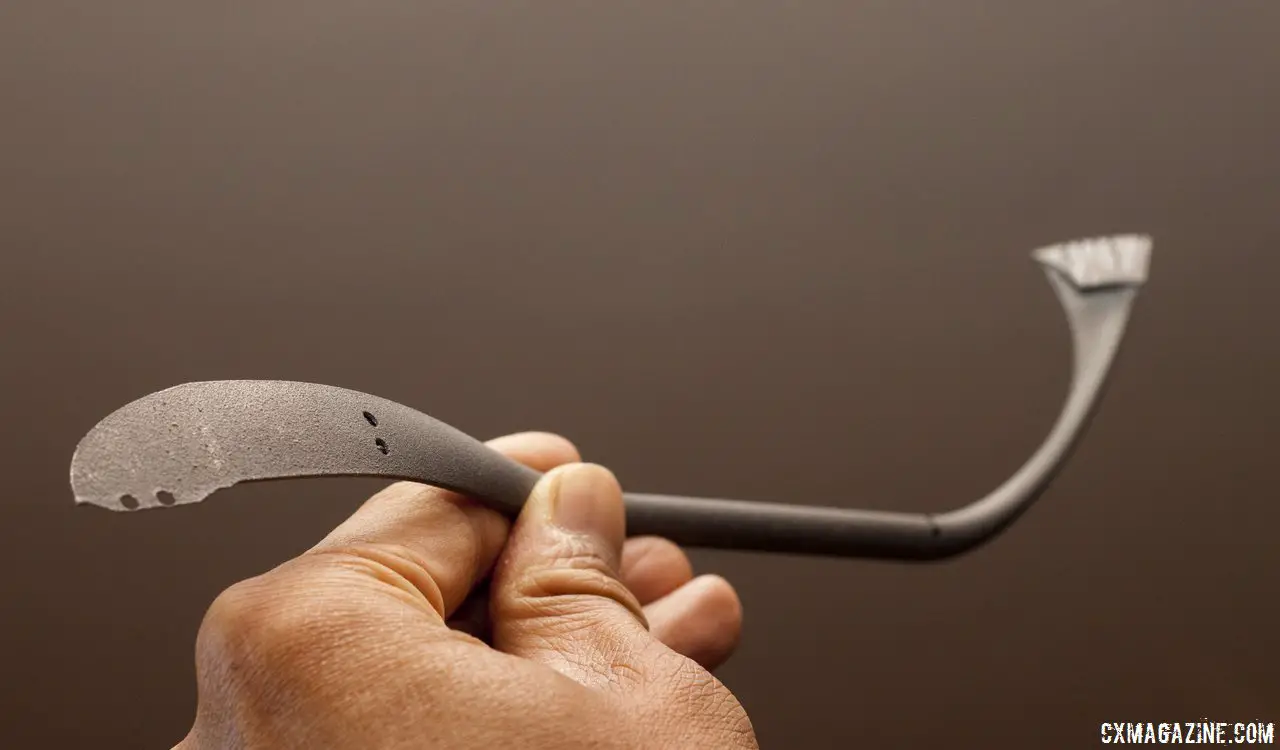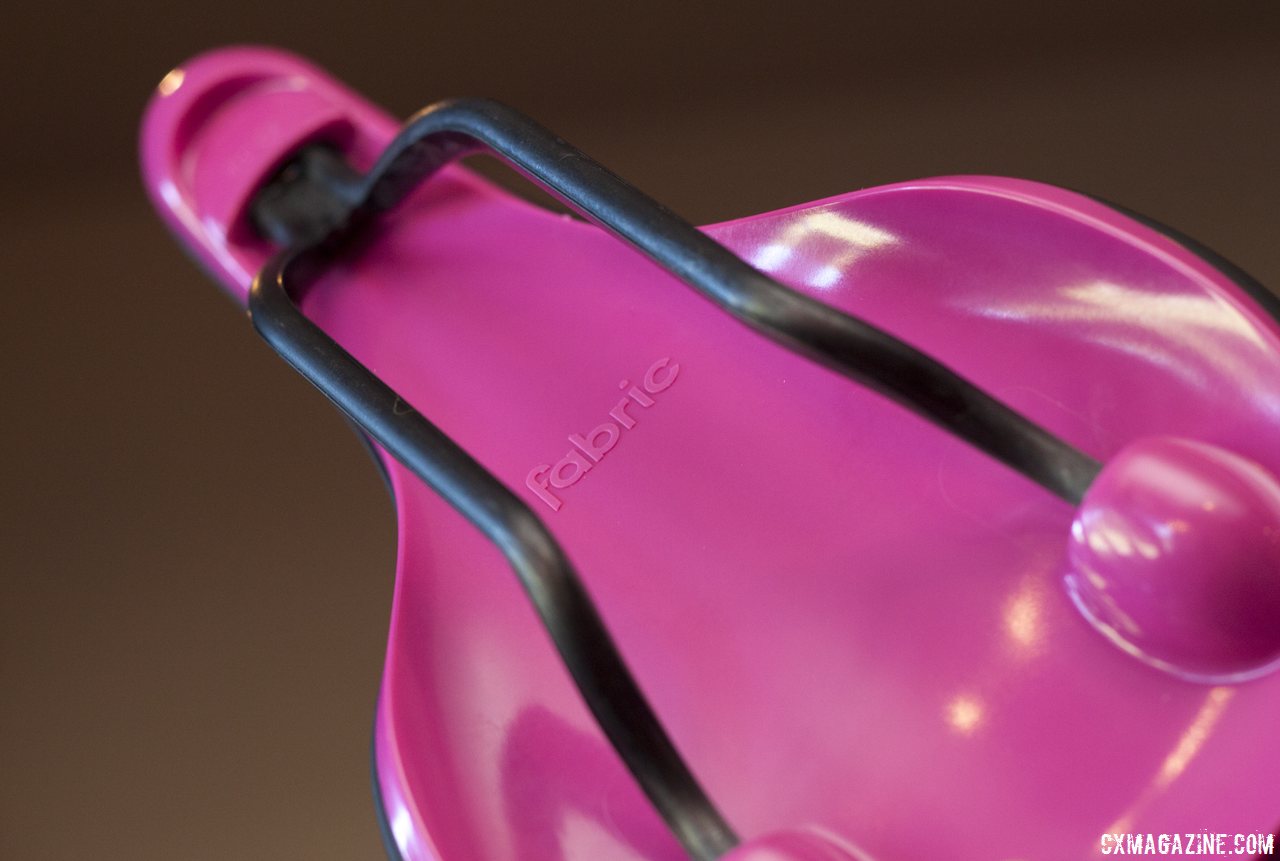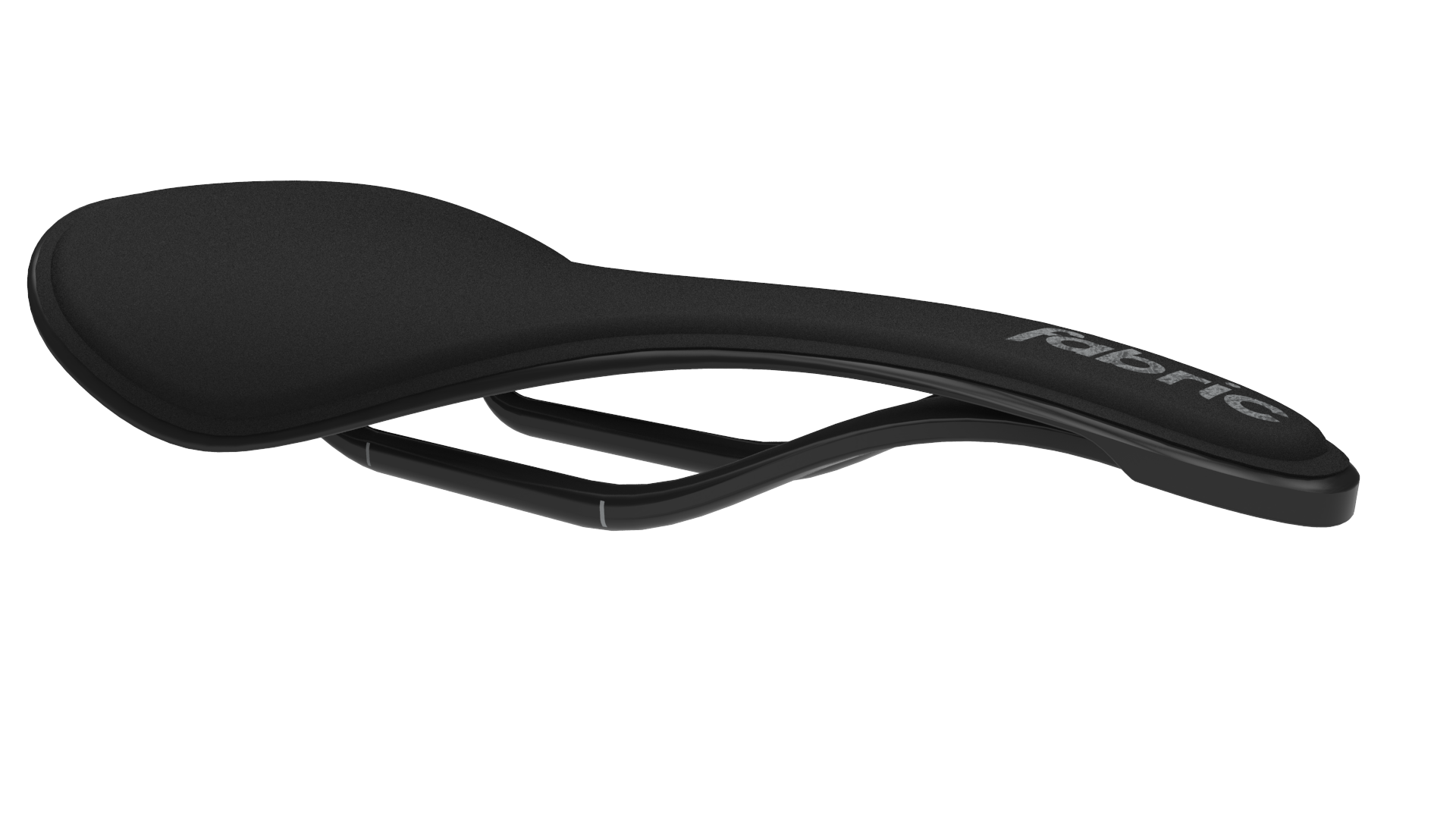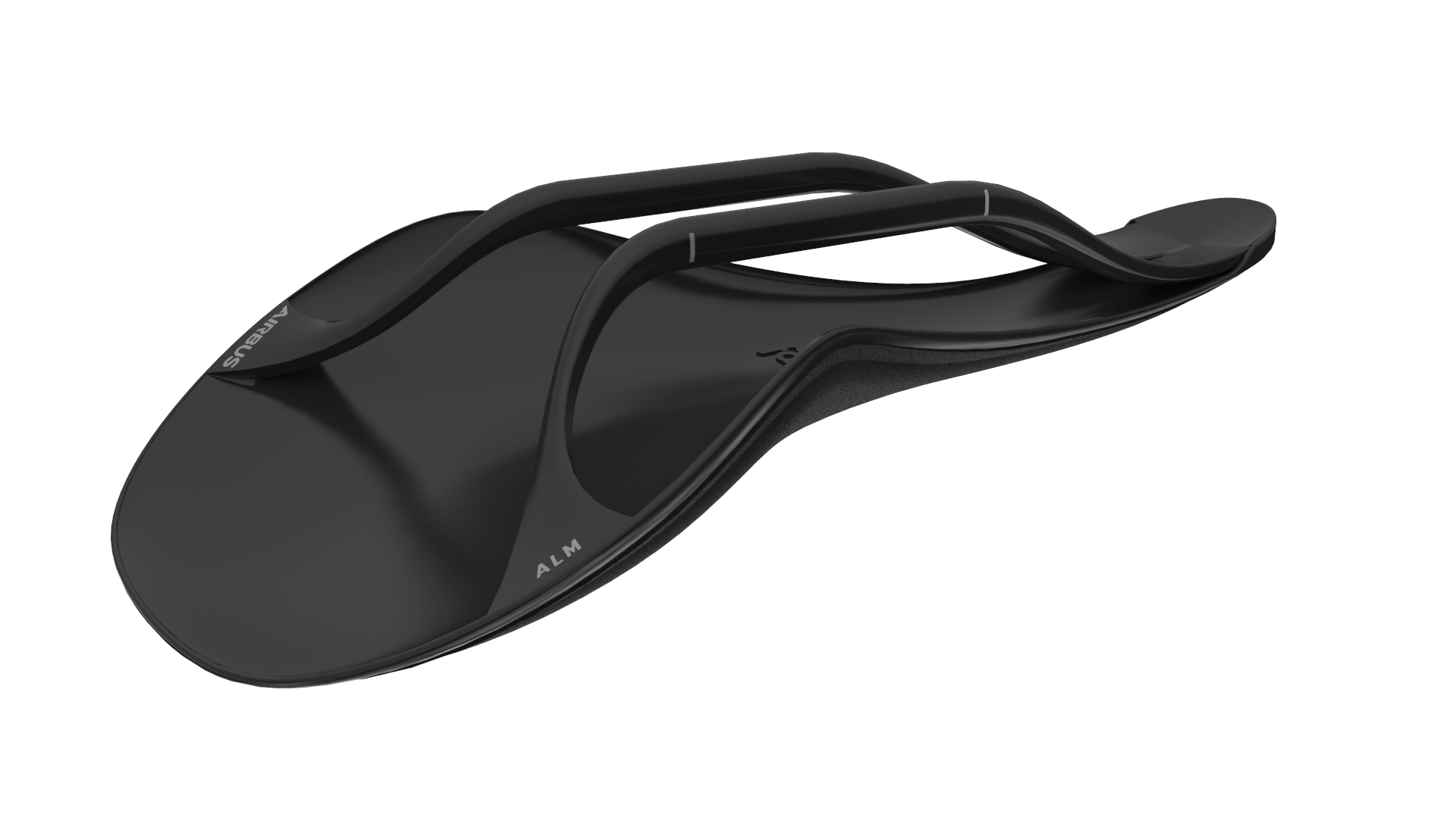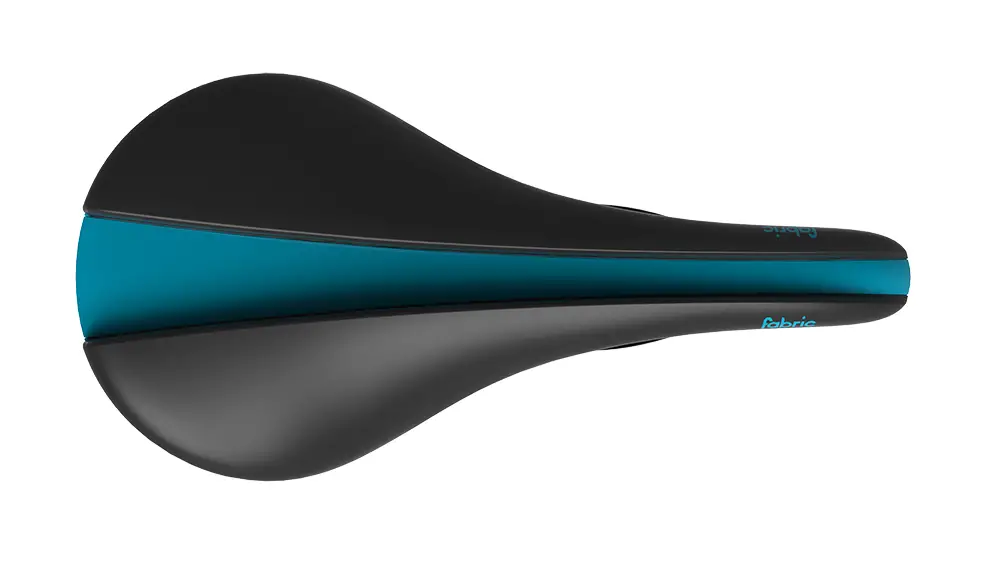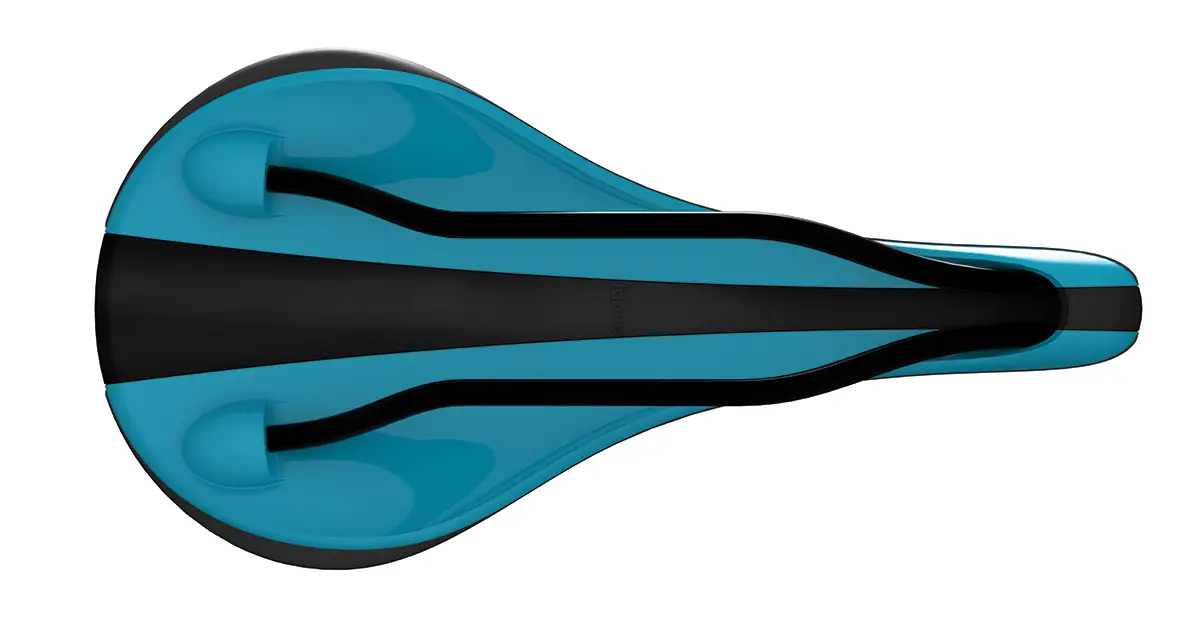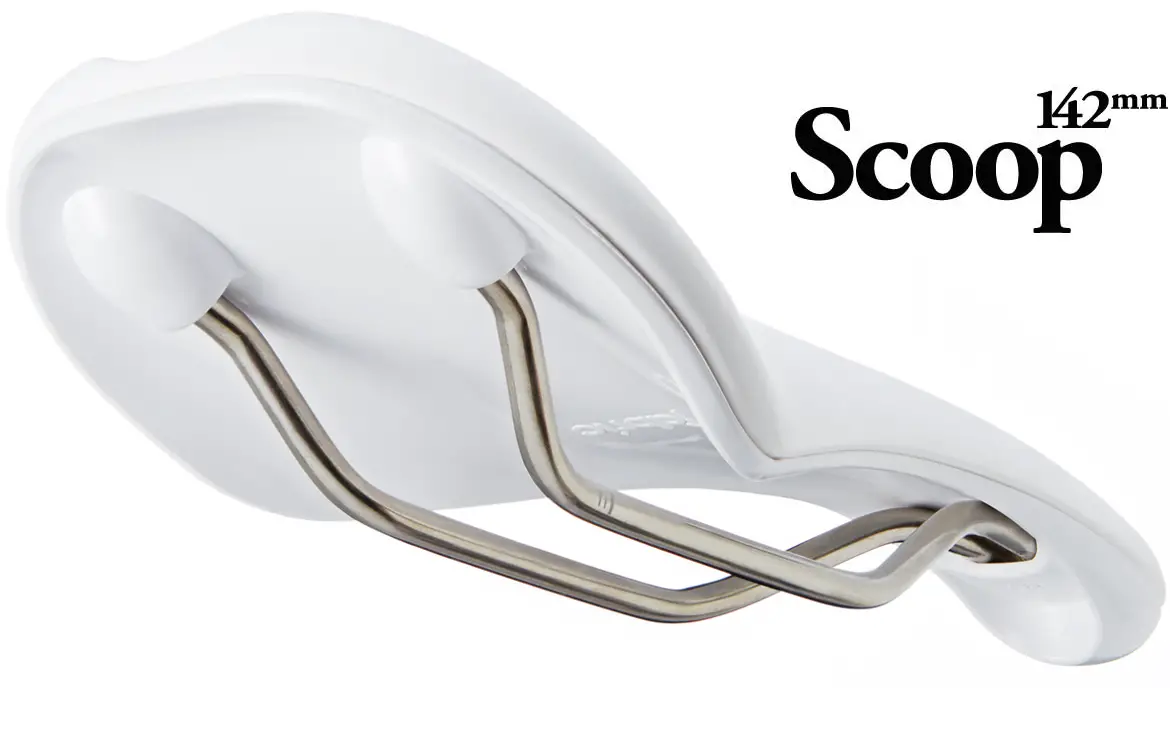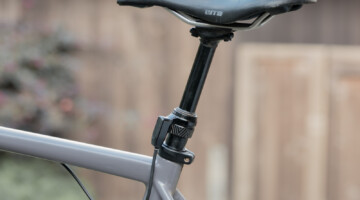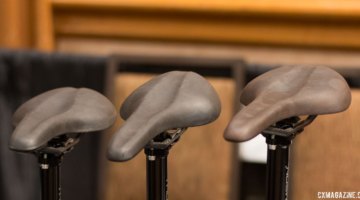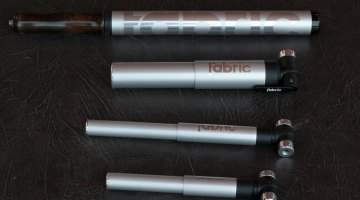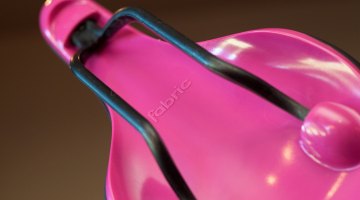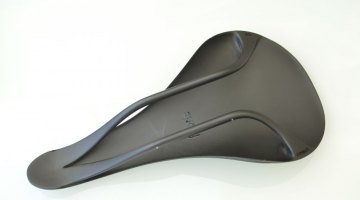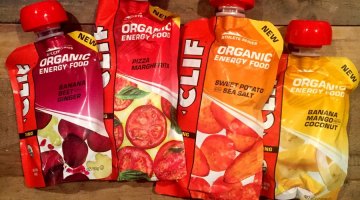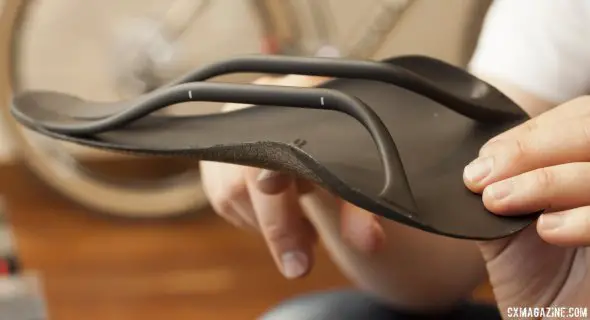
The top shelf ALM saddle started with 3D printed titanium rails but now uses lighter, stronger full-carbon rails in the production model. © Cyclocross Magazine
Fabric is a new saddle company, a yet-to-be-released offshoot of UK-based Charge Bikes, with a new premise for saddles. While companies like Fizik offer a vast variety of styles for different riders (are you a Bull, Snake or Chameleon?), Fabric offers more customization of their ultra-simple saddle designs. The saddles are also ultra-light, thanks to new construction techniques and fewer components and materials.
Think that sounds like an uncomfortable compromise? We thought so to, but our initial impressions would prove the exact opposite—the thin, flexible saddles are extremely comfortable because of their construction technique.
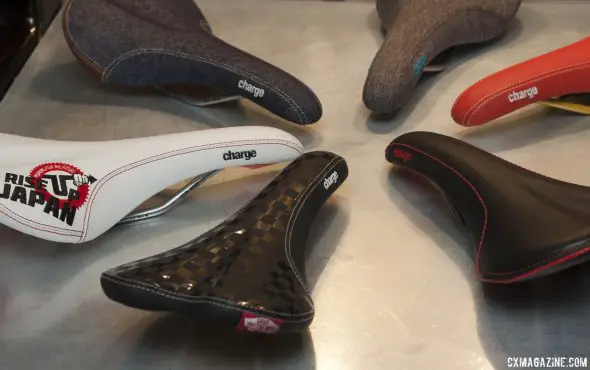
The popular Charge Bikes Spoon saddle, shown here with many custom options, is what inspired Nick Larsen to launch Fabric. © Cyclocross Magazine
Charge Bikes is known for their popular line of saddles—highly customizable and so in demand that founder Nick Larsen decided to start Fabric as an offshoot brand to meet the demand.
There are four saddle options, the Scoop, Line, Cell and Alm, with choices in rail material (carbon, ti, or cro-moly steel) as well as a choice of carbon or nylon for base material, and you’ll see Fabric saddles on some of Cannondale’s high-end road bikes this fall as well.
Larsen is attempting to redefine how bicycle saddles are made.
Every try sitting on a drum? The taut drum head, whether it’s made from leather or polyethylene terephthalate does not flex or conform to you. What does that have to do with bike seats? Modern saddles are often created by stretching some faux leather over some padding, pulling it very tight and stitching it down. The result is a cover that after assembly is taut like a drum, so that it stays in place.
Fabric hopes to avoid this problem by reducing the components, and for some of its saddles, simply gluing a cover to the top of a thin, flexible base. The base flexes with your body and the road, and the cover doesn’t have any tension to counteract the flex or minimize the benefits of padding.
The company showed off its impressive line of new saddles at Summer Press Camp, and we take a look at their new models below.
The Scoop
The mid-range saddle in terms of comfort, the Scoop is “a mid-width saddle designed to provide flexibility and comfort in all disciplines of modern cycling. It is the perfect balance of comfort, performance and simplicity.” Prices start at $69.99, and models include the highest spec version, uni-directional carbon fiber priced at $279.99, a carbon fiber version, titanium version, and hollow cro-mo version as the least expensive of the bunch.
The Cell
The Cell is the most comfort-driven of the four, and is described as being “perfect for cyclists with wider sit bones.” Of the four, it has the most cushioning to distribute the rider’s weight evenly across the saddle, and “pressurized air-cells set in flexible PU material allow expansion to reduce the force of impact and vibrations.”
This model will be released in the Fall. Remind you of a popular shoe sole? That’s not a coincidence, the company admits.
The Line
The Line is interesting in that it caters to a specific rider profile. The Line is a narrow saddle with a pressure relief channel in the cover that optimizes weight and increases flexibility, and is “best suited to a narrow-hipped, slim body.”
The Line is new to the market, so pricing is still being determined.
The Alm
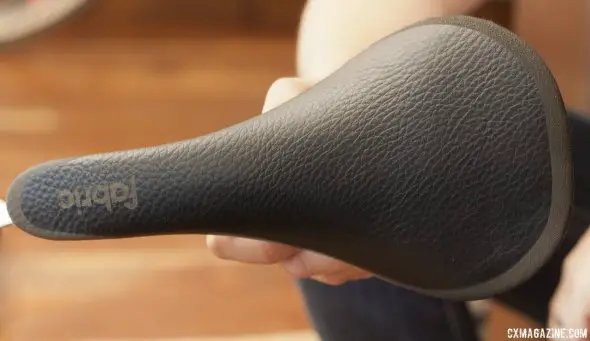
Buffalo leather cover, carbon base and carbon leaf spring rails. Fabric 2015 saddles, Press Camp 2014. © Cyclocross Magazine
Clearly the raciest of the three, the Alm is narrow and more suited to a 40 minute race than a 100-mile gravel grinder. The first versions were made with cutting-edge aerospace technology from Airbus, with 3D printing of titanium rails that were later wrapped in carbon. The result? An ultralight, high-end saddle that put it into whole-bike range at over $750 dollars with a buffalo leather cover. Fabric calls this “a departure from traditional saddle design” and we’d agree. We’d also call that a departure from tradition saddle pricing, and they’d agree. So they went back to the drawing board, determined they could make the entire rail out of carbon and have it be lighter and stronger.
It looks simple, since it’s almost entirely carbon: Custom leaf-spring carbon-fibre rails and an aerospace-grade UD carbon-fiber base leave the Alm weighing in at 127 grams. It’s still pricey at over $300, but no longer an order of magnitude above other top-shelf saddles.
The shell is so thin, cyclocrossers might worry about catching the sharp edge on their shorts on a remount, but it’s a price to pay for having the cutting-edge in saddle design.
We currently have a few Fabric saddles in hand and are impressed. Stay tuned for a full review.
More info: fabric.cc













